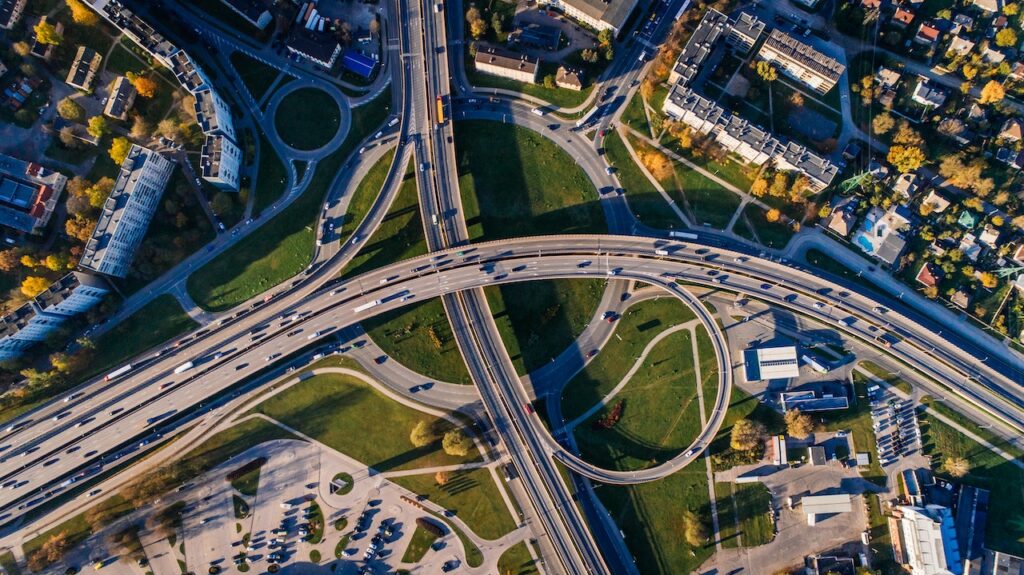Urban mobility is undergoing a transformative revolution, and at the forefront of this change lies the Internet of Things (IoT). IoT-enabled transportation systems are reshaping the way people move within cities, offering unprecedented levels of efficiency, safety, and sustainability. In this article, we will explore the remarkable impact of IoT on urban mobility and how it is paving the way for smarter, more connected cities.

The Evolution of Urban Mobility
For decades, urban mobility has been characterized by traditional transportation methods like cars, buses, and trains. While these modes of transportation have served cities well, they have also presented challenges such as traffic congestion, pollution, and limited accessibility. As urban populations continue to grow, cities face the pressing need to reimagine mobility solutions for a more sustainable and efficient future.
Enter IoT-Enabled Transportation Systems
The Internet of Things has emerged as a game-changer in urban mobility. IoT refers to the network of interconnected devices and sensors that can collect, analyze, and share data without human intervention. In the context of transportation, IoT enables vehicles, infrastructure, and transportation systems to communicate and collaborate seamlessly, creating a connected ecosystem.
Smart Traffic Management
IoT-enabled traffic management systems are revolutionizing the way cities handle congestion. Smart traffic lights equipped with sensors can adapt in real-time based on traffic flow, optimizing signal timings to minimize delays and enhance the overall efficiency of transportation networks. Moreover, IoT data analytics can help city planners identify traffic hotspots and implement targeted solutions to alleviate congestion.
Improved Public Transportation
Public transportation is a crucial aspect of urban mobility. IoT is transforming buses, trains, and trams into smart vehicles. Real-time tracking systems allow commuters to check the exact arrival times, helping them plan their journeys more efficiently. IoT sensors on public transport can monitor passenger occupancy, enabling authorities to manage capacity effectively and improve the overall transit experience.
Enhanced Safety and Security
Safety is paramount in urban mobility. IoT-enabled transportation systems are making travel safer by employing various technologies. For example, IoT sensors in vehicles can detect potential collisions and automatically apply brakes or issue warnings. Additionally, smart surveillance systems using IoT sensors and cameras enhance security in public spaces and transportation hubs, reducing the risk of crime.
Sustainable Solutions
IoT plays a vital role in promoting sustainability in urban mobility. By integrating electric vehicles with IoT, cities can optimize charging infrastructure, manage energy consumption, and incentivize electric vehicle usage. This not only reduces carbon emissions but also lays the groundwork for a greener and cleaner urban environment.
Autonomous Vehicles
Autonomous vehicles are the pinnacle of IoT-enabled transportation. These self-driving vehicles use a multitude of sensors and data analytics to navigate roads safely and efficiently. Autonomous cars have the potential to revolutionize urban mobility by reducing accidents, improving traffic flow, and providing accessible transportation solutions for all, including the elderly and differently-abled.
The Role of High-Speed Internet
The seamless functioning of IoT-enabled transportation systems hinges on high-speed internet connectivity. IoT devices generate vast amounts of data that require real-time processing and analysis. High-speed internet ensures that data can be transmitted swiftly between vehicles, infrastructure, and transportation management centers, enabling real-time decision-making and response.
Moreover, high-speed internet connectivity empowers passengers to access information about transportation services in real-time through mobile apps and digital platforms. This real-time data sharing improves the overall commuting experience, allowing users to make informed decisions about their travel routes and schedules.
Challenges and Considerations
As with any transformative technology, IoT-enabled transportation systems also face challenges. Data privacy and security are critical concerns as IoT devices collect sensitive information. Proper encryption and robust cybersecurity measures must be in place to safeguard user data and prevent potential breaches.
Additionally, the integration of IoT across various transportation modes requires collaboration among different stakeholders, including governments, private companies, and urban planners. Public-private partnerships can drive innovation, share resources, and create sustainable models for IoT deployment in transportation.
The Way Forward
As IoT-enabled transportation systems continue to mature, the future of urban mobility looks promising. Cities that embrace these smart solutions are poised to become more sustainable, accessible, and efficient. With high-speed internet connectivity as the backbone, IoT is revolutionizing how people navigate urban environments, making cities more livable and vibrant for residents and visitors alike.
IoT-enabled transportation systems are revolutionizing urban mobility, offering efficient, safe, and sustainable solutions for cities worldwide. From smart traffic management and improved public transportation to enhanced safety and security, IoT is transforming the way we move within urban spaces. With high-speed internet connectivity facilitating seamless data exchange and real-time decision-making, the potential of IoT in urban mobility is limitless. As cities continue to embrace these technologies, the future of urban mobility holds the promise of more connected, greener, and accessible cities for all.